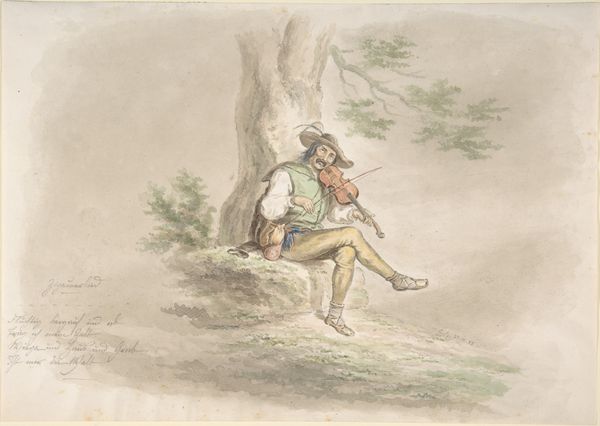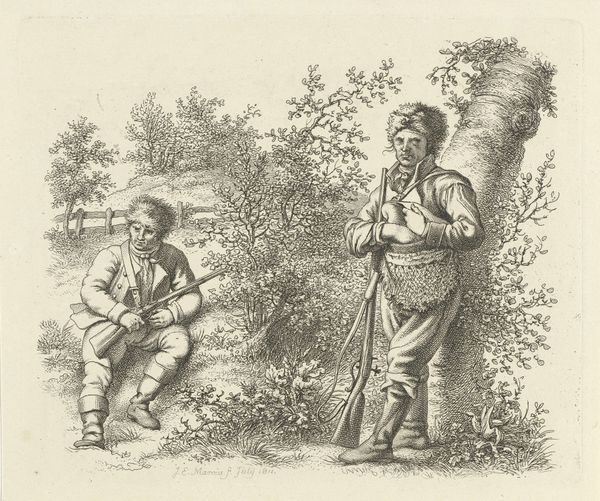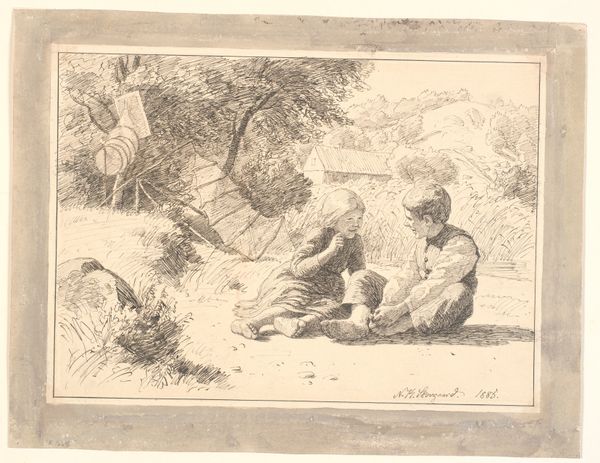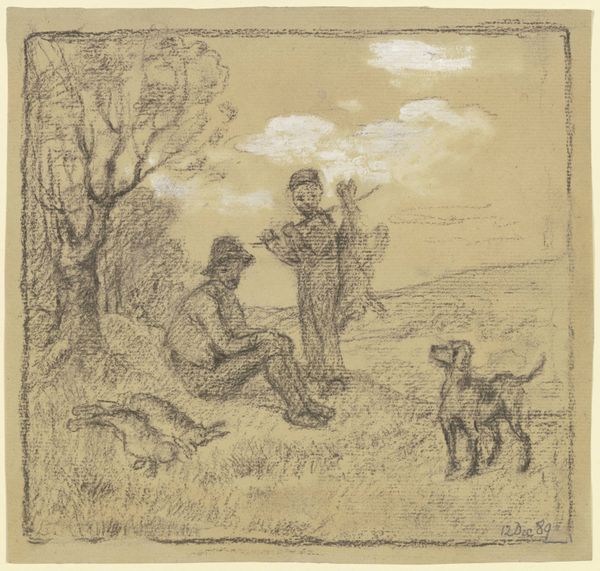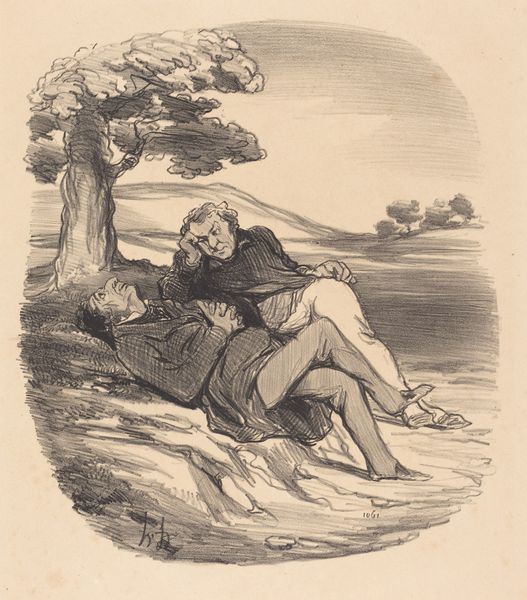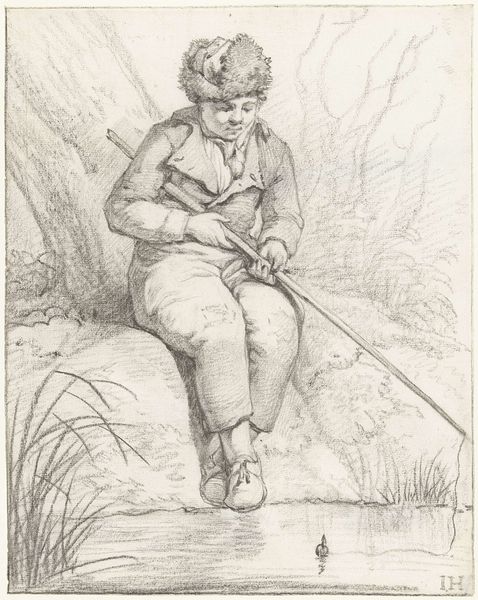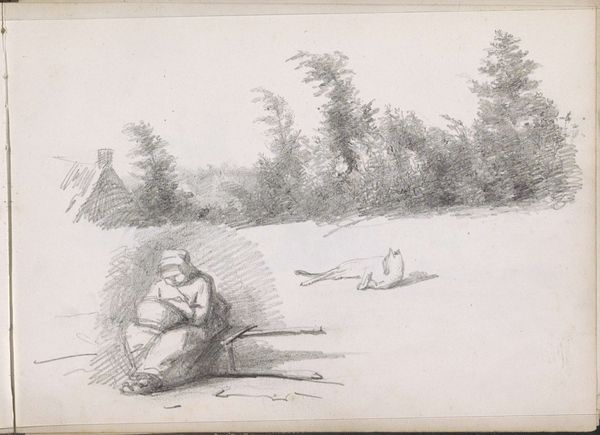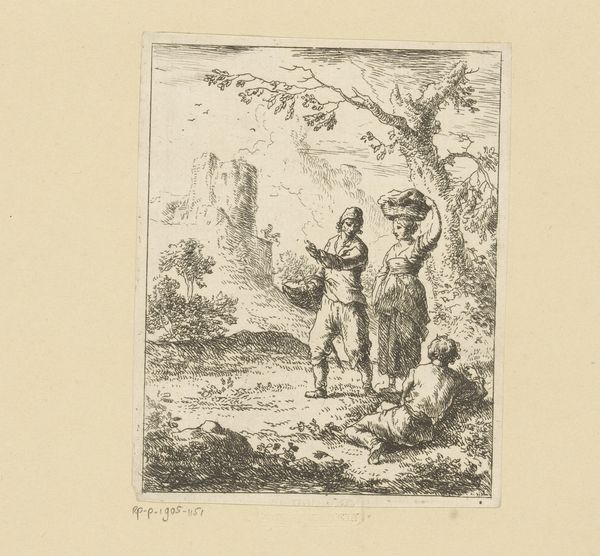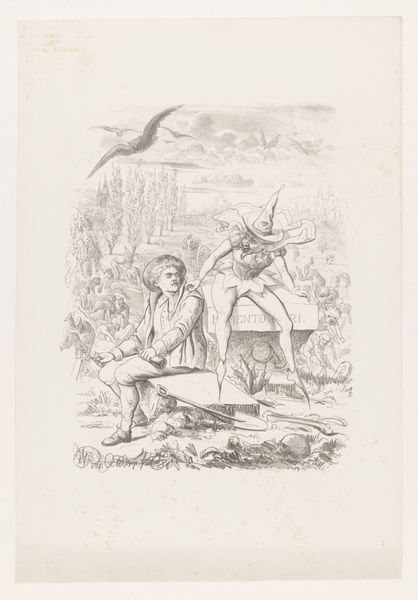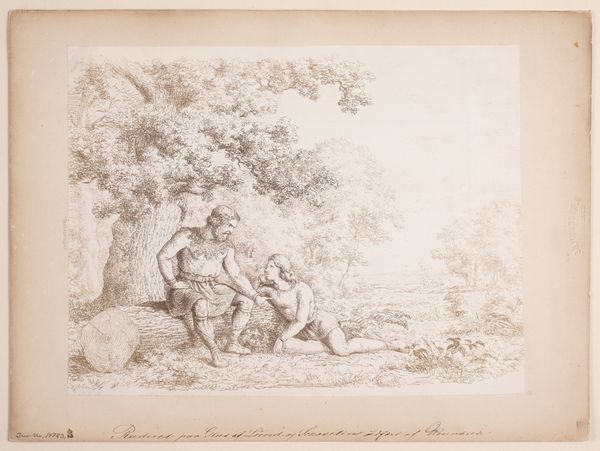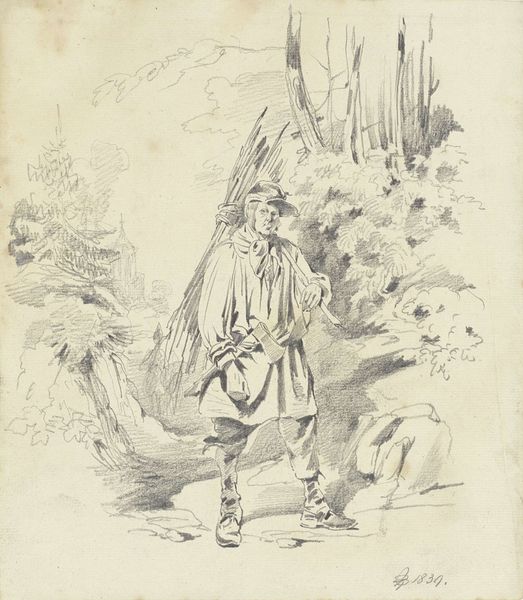
Illustration til "Halvhundrede Fabler for Børn" af Hey 1834
0:00
0:00
drawing, print, paper, ink, engraving
#
drawing
# print
#
landscape
#
paper
#
ink
#
romanticism
#
genre-painting
#
engraving
Dimensions: 100 mm (height) x 140 mm (width) (bladmaal)
Curator: A curious drawing, all in sepia tones. An outdoor scene where a man seems to be resting by the roadside. The artist's light and quick rendering creates a hazy, dreamlike effect. Editor: Quite right. Here we have Martinus Rørbye’s illustration dating back to 1834. The full title is “Illustration til ‘Halvhundrede Fabler for Børn’ af Hey,” which translates to 'Fifty Fables for Children'. Executed using ink on paper, employing both engraving and drawing techniques. A confluence of mediums, wouldn't you say? Curator: Indeed, a clever blend. The linear precision of the engraving contrasts nicely with the fluid lines of the drawing, creating a compelling visual texture. The subject, situated on the lower left quadrant, assumes a posture that leads one's eyes to the upper right, echoing and emphasizing a narrative reading. It's meticulously assembled, even though at first glance seems loose. Editor: I agree about the textures. Consider the socio-political landscape of 1834 Denmark. There was a burgeoning interest in national identity. Romanticism often looked back to a pre-industrial, simpler time, much like this resting figure and the gently agrarian setting. I see a subtle longing here, even in a piece made for children. What I think makes the work charming is Rørbye’s play on the contrast between the figure's repose versus what lies ahead of him, along the meandering path to the spire on the horizon. Curator: A compelling connection between the figure’s state of contemplation, and the infinite possibilities presented in the fable’s narrative space. What appears to be a mere pause transforms into a significant intersection between personal introspection and societal movement. Editor: Precisely! And let's not forget Rørbye's contribution to Danish Golden Age painting and his impact on shaping a national artistic identity. The fact this image served as an illustration for children is interesting: perhaps it can be seen as instilling the Romantic ideals in younger generations. Curator: A fascinating note on how form mirrors the subtle shaping of ideological perspectives. All brought forth through careful visual arrangement and symbolic association. Editor: So much to ponder indeed. Makes one want to read these fables again, doesn't it?
Comments
No comments
Be the first to comment and join the conversation on the ultimate creative platform.
